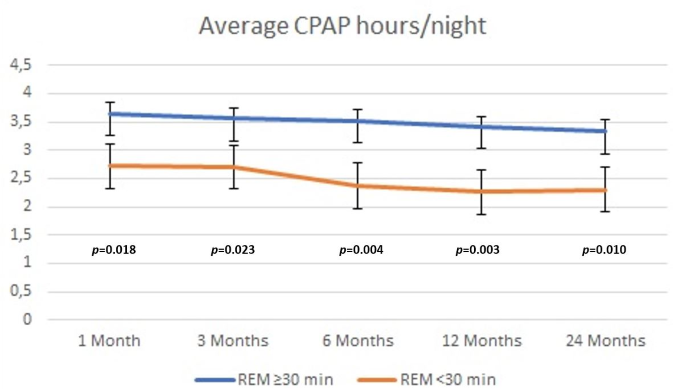Abstract
Background: Decreased rapid-eye movement (REM) sleep has been linked to adverse health outcomes. Little is known about the relationship between REM sleep and continuous positive airway pressure (CPAP) use in patients with coronary artery disease (CAD) and obstructive sleep apnoea (OSA).
Objectives: To address determinants of REM sleep less than 30 minutes (REM<30min) and whether REM<30min predicts less CPAP use in patients with CAD and OSA.
Methods: Participants in the RICCADSA trial with total sleep time (TST)?240 min on baseline polysomnography and objective CPAP adherence over 2 years were included (N=253). Multivariate regression analyses were used to test the association of REM<30min with adherence to CPAP.
Results: REM<30min was found among 52 (20.6%). They were significantly older, more obese, had shorter TST, higher Apnoea-Hypopnoea-Index (AHI) and Zung Self-rated Anxiety (SAS) scores, compared to patients with REM?30min. CPAP use is shown in Figure 1. In multivariate analyses, REM<30min was inversely correlated with CPAP h/night at all follow-ups (?-coefficient -0.15; 95% CI -1.9, -0.1; p<0.03 at 2-yr), adjusted for age, gender, body-mass-index, sleep onset (min), slow-wave sleep, AHI and SAS scores.
Conclusions: REM<30min at baseline was a significant predictor of less CPAP use in patients with CAD and OSA. Early recognition of REM<30min may help predict and improve CPAP adherence.
